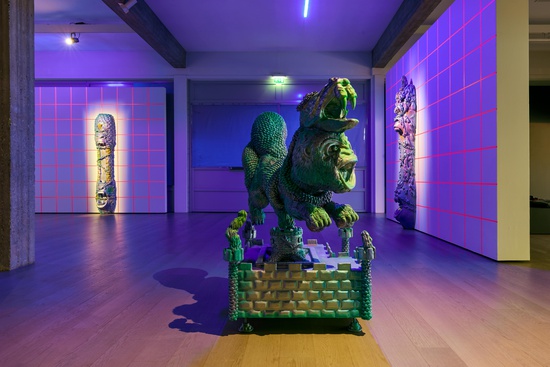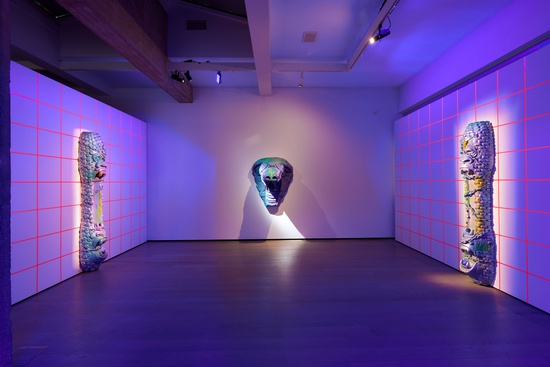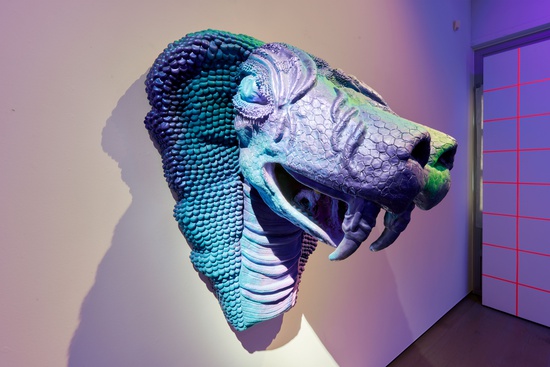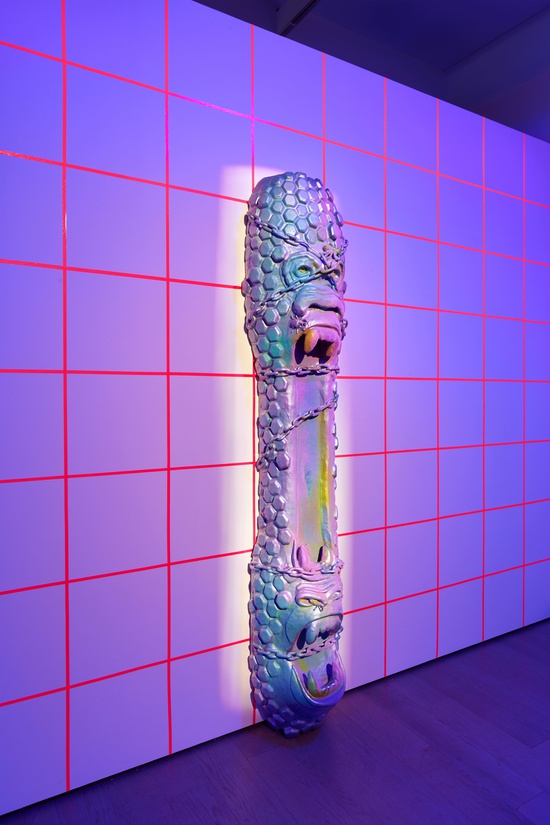Deep Throats
Mamali Shafahi
(2022)
Mamali Shafahi’s “Deep Throats” contain a deep fascination for the impact of emerging technology on life and art. Shafahi’s concern is that new generations are losing ties with the magical past of traditional cultures and that technology is diminishing our interest in myth and legend. As a result, Shafahi deliberately builds bridges between our high-tech future and the richness of ancient cultures. In Persian fables, as in many ancient cultures, the protagonists are animals. Shafahi employs such animal iconography - that of gorillas, snakes, scorpions - as each culture has its own symbolic reading. We see tales across geography and history doing the same: from Aesop and La Fontaine; Kalila wa-Dimna, One Thousand and One Nights, to Attar of Nishapur’s The Conference of the Birds. In ‘How deep is your mouth?’, within a snake’s head, there are two gorilla babies playing inside its mouth, ignorant to the snake’s own rage. With these puzzling, frightening, violent, and yet playful situations, Shafahi connects ancient fables with the cartoons and video games that shaped the imaginations of children in the 20th century.
To explore “genetic heritage” within his family, Shafahi persuaded his father, Reza (then 70 and with no prior artistic experience) to start drawing. Through this, Shafahi hoped to identify signs of a shared creative gene. He placed both of his parents in roles of actor, artist, and even digital characters throughout his work. In doing so, he explores the implications of an inverse parent-child relationship that he calls ‘mutual metamorphosis’: parents create and raise their children and later, the adult children transform their parents.
Using suggestive, sexual or romantic titles such as ’How Deep is your Love’, Shafahi plays with pop culture icons and memory. This is part of a mission to give mythology an appeal to the next generation, merging pop culture with history and fables. Gorillas and apes become parallel to people through our shared genetic history and affectations. Their joy and anger are relatable. Using the technique of velvet flocking is a further call to nostalgia. For Shafahi, it is full of memory. In cinema, there is the film ‘Blue Velvet’ by David Lynch. In Middle Eastern culture, it has been used in everything from car interiors to t-shirts. Thus, there is a question of self-value: flocking appears as velvet, but it is a cheap substitute. When UV light is applied, a new futuristic aesthetic emerges wherein technology allows us to see what we can not with the naked eye.





